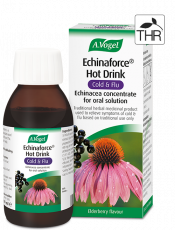Why do people use Echinacea?
Echinacea is one of the most popular herbal medicines in the UK, Ireland and many other parts of the world. The scientific evidence for its use in both the treatment and prevention of colds and flu1, 2 has built up year upon year, justifying its popularity. Although it has a traditional use for a variety of minor infections, many people now use Echinacea to fight off colds and flu and to strengthen the immune system, all year round.
However, have you ever wondered why the Echinacea you take works better on some occasions than others? Of course, not all medicines (conventional or herbal) will work every time for everyone. There are many variables involved with any health condition which might explain why, for example, the painkilling tablets you might take for your headache may not always help you.
But what has this research revealed about Echinacea?
What the research has found
Recent research has helped us to understand better how Echinacea works and scientists have discovered that different parts of the plant have different properties and activities.
We now know that a group of plant substances called alkylamides play a key role by influencing the way the immune system works. When we are stressed or overworked, our system becomes ‘run down’ and prone to picking up bugs. Research has shown that Echinacea strengthens the body’s resistance by improving the body’s response to infection, particularly in those with weakened immune systems.3 Alkylamide levels have also been shown to be higher in extracts made from fresh plants.4
More recently, scientists have found that Echinacea works in another way – it has a direct anti-viral action on many of the viruses causing colds and flu, blocking and preventing the entry of these viruses into cells. What is interesting about this discovery is that not all parts of the plant were active. Anti-viral action was not found in the roots, but in the rest of the plant which scientists simply call ‘herba’ or ‘herb’ – the parts of Echinacea growing above the soil (stems, leaves and flowers).5
In addition, researchers found that fresh extracts of Echinacea herb contained 10 times more anti-viral activity when compared to equivalent amounts of dried herb.
Echinacea at A.Vogel
When Alfred Vogel decided on the formulation of Echinaforce® in the 1950s he did so after testing various combinations of herb and root extracts for their effectiveness. Through trial and error, he came up with a formula that made use of the whole plant (95% herb and 5% root). He also insisted that only freshly harvested plant material was used - never dried!
Little did he know that one day scientists would help us understand why this combination proved to be the most beneficial to his patients, and also to recognise the importance of using freshly harvested plants.
Today, many Echinaceas on the market contain only the dried root. The new research suggests that these may not contain the anti-viral activity present in Echinacea. People who have tried Echinacea with moderate success in the past might not have been taking the optimum formulation containing both herb and root, such as Echinaforce.
As we have said, not every medicine will work for everyone at every use. Science has shown us that choosing the right Echinacea product can improve our chances or reaping the optimum benefit from the Echinacea plant.
References
[1] The Cochrane Database of Systematic Reviews 2006, Issue 1. Art. No: CD000530.pub.
[2] Eccles study Jawad, M., et al., Safety and Efficacy Profile of Echinacea purpurea to Prevent Common Cold Episodes: A Randomized, Double-Blind, Placebo-Controlled Trial. Evid Based Complement Alternat Med, 2012. 2012: p. 841315.
[3] Ritchie MR, Gertsch J, Klein P, Schoop R. Effects of Echinaforce® treatment on ex vivo-stimulated blood cells. Phytomedicine. 2011 Jul 15;18(10):826-31.
[4] Tobler M, et al. Characteristics of whole fresh plant extracts. GanzheitsMedizin.1994; 257-266.
[5] Vimalanathan S, et al. Optimisation of Echinacea purpurea extraction and processing to yield high potency antiviral activity. 2013 (poster).









